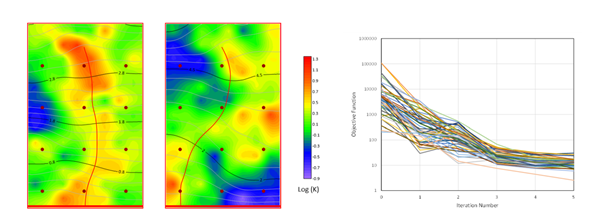
Data Assimilation for a Simple Model
This tutorial explores construction of the interface between PEST/PEST++and a simple MODFLOW/MODPATH model, and how to then subject that model to history-matching and uncertainty analysis–including

This tutorial explores construction of the interface between PEST/PEST++and a simple MODFLOW/MODPATH model, and how to then subject that model to history-matching and uncertainty analysis–including

This tutorial introduces data space inversion (DSI). DSI can be used to explore the uncertainties of predictions made by complex models with complicated hydraulic property

This tutorial explains four ways to explore the uncertainties of two predictions made by a relatively simple, fast-running model. These are: Linear analysis Sampling a

In contrast to linear uncertainty analysis, non-linear methods do not suffer from the limitation of assuming a linear relationship between model predictions and model parameters.

The present tutorial addresses the ability (or otherwise) of yet-ungathered data to reduce the uncertainties of decision-critical predictions using linear analysis utilities from the PEST

Linear uncertainty analysis is also known as “first order second moment” (or “FOSM”) analysis. It provides approximate mathematical characterisation of prior predictive probability distributions, and
GMDSI is managed by the National Centre for Groundwater Research and Training (NCGRT) and administered by Flinders University.